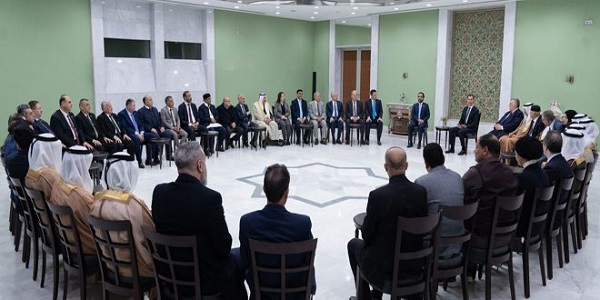Since 2011, Syria has been engulfed in a devastating civil war, significantly impacting its regional and international relations. The government, led by Bashar al-Assad and allied with Iran, lost its Arab League membership in 2011. The League granted membership to the primary opposition group, the Syrian National Coalition. However, since 2014, Syria’s seat has remained vacant until the opposition finalizes its institutions. The rise of the Islamic State shifted the focus to combating terrorism in Iraq and Syria, inadvertently providing the Baathist regime with a lifeline.
As the Syrian civil war approaches its end, clear winners and losers have emerged. Assad’s regime, initially facing overwhelming regional opposition, has come out on top. The Kurds have also experienced gains, capturing extensive territories with support from the Global Coalition. They’ve established self-governing structures within the Autonomous Administration of North and East Syria (AANES), also known as Rojava. On the other hand, the Syrian opposition groups have suffered, becoming proxies for Turkey and Qatar, while the Islamic State faces territorial defeat.
These developments have significantly changed diplomatic relations with Syria, as most countries seek stability over chaos. Turkey and Saudi Arabia, former opposition supporters, are keen to normalize relations with Syria. Turkey’s reasons include balancing ties between the United States and Russia and shifting priorities from toppling Assad’s regime to ending the Kurdish-led autonomous project in Syria. With the United States fully supporting the Kurdish-led Syrian Democratic Forces, Turkey has turned to Russia and Syria, opening diplomatic channels and no longer backing the opposition as it once did.
Saudi Arabia, leader of the Gulf Cooperation Council, has also evolved its policy for several reasons. Iran, feeling threatened after widespread demonstrations following the death of Kurdish woman Jina ‘Mahsa’ Amini in their custody, seeks to normalize relations with regional adversaries. The growing Iranian and Turkish influence in Syria has prompted them to reconsider their approach, preferring Syria under Arab influence. The recent regional truce with Iran, brokered by China, has played a significant role in normalization.
Additionally, the recent deadly earthquake in southeast Turkey and northwest Syria has necessitated regional countries to normalize relations with Assad’s regime for aid delivery. Assad visited Oman for the first time since the conflict began. Saudi Arabia is expected to invite him to the upcoming Arab League Summit in May, potentially ending Syria’s Arab isolation. The United Arab Emirates (UAE) spent 2022 normalizing relations with Syria, encouraging Turkey to do the same.
Syria’s return to the Arab fold is a matter of when not if. With regional countries increasingly willing to move past the civil war and the lives it claimed, normalizing relations with Assad seems to be the prevailing trend. The Arab world no longer has the appetite for regime change or the rise of more Islamic fundamentalism in the region. Assad will likely be pleased, as he will no longer have to rely solely on Iran in the region. The region is ready to welcome back the sibling they once abandoned.


